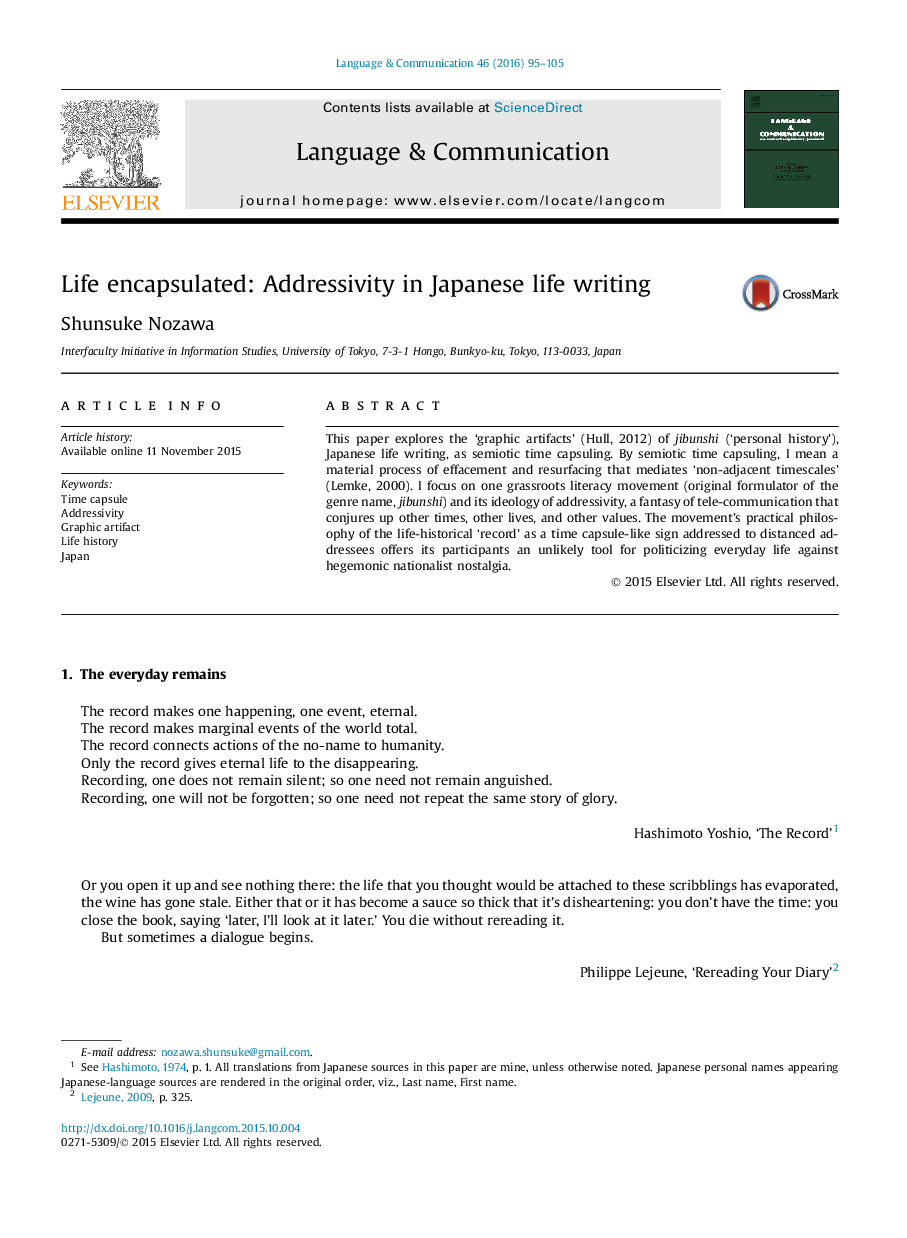| Article ID | Journal | Published Year | Pages | File Type |
|---|---|---|---|---|
| 934866 | Language & Communication | 2016 | 11 Pages |
•Life historical texts as graphic artifacts are analogized to modern time capsules.•The idea of semiotic time capsuling is proposed as a form of historical semiosis.•Semiotic time capsuling affords ideologization of addressivity.•A Japanese ‘personal history’ project is discussed as an ethnographic case.•The case reveals a conceptual contrast between two kinds of addressivity.
This paper explores the ‘graphic artifacts’ (Hull, 2012) of jibunshi (‘personal history’), Japanese life writing, as semiotic time capsuling. By semiotic time capsuling, I mean a material process of effacement and resurfacing that mediates ‘non-adjacent timescales’ (Lemke, 2000). I focus on one grassroots literacy movement (original formulator of the genre name, jibunshi) and its ideology of addressivity, a fantasy of tele-communication that conjures up other times, other lives, and other values. The movement's practical philosophy of the life-historical ‘record’ as a time capsule-like sign addressed to distanced addressees offers its participants an unlikely tool for politicizing everyday life against hegemonic nationalist nostalgia.
